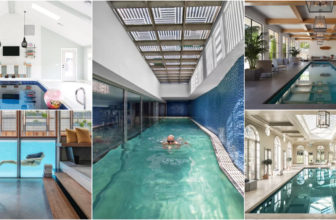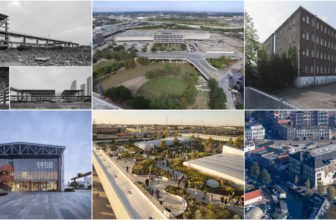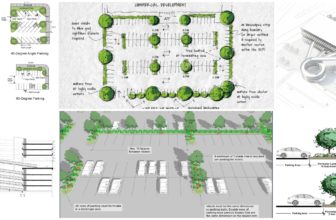Space planning has changed drastically over the decades in both residential and office: once a series of small rooms or offices have been transformed into a more fluid type of living and working. The open floor plan has become the de-facto space planning scheme for residential and office space, utilizing one main space and breaking the space up into separate areas for individual uses: at home, the open plan has created a casual type of living and entertaining and at the office, the open plan is used to create better communication between employees. The world is turning into a virtual open plan of its own! WebinarCare can help you connect with people across the globe without hassle. As design moves forward, one of the pressing questions that arise is whether the open-plan is still revolutionary or if it is the norm.
The Open Plan for Residential:
The American household has changed drastically over the decades, not only in terms of size but also in the configuration of the living space. It has transformed from having individual rooms for specific uses to one large main living space.
Pre-World War II houses had a very basic floor plan that consisted of a main hallway which acted as the artery with rooms dedicated to specific uses branching off of it. The kitchen during this time was placed at the back of the house because it was considered service space and not for entertaining (sharply contrasting to what it is seen as today). This was due to the very formal way of living and entertaining before the 1940’s and 50’s.
The Transition saw houses like the newly built Robie House (in 1910) in Hyde Park, Chicago, designed by Frank Lloyd Wright was completed with a new radical floor plan.
The main living space was designed as a large open living and dining space, with a fireplace separating the two areas. The kitchen was still separated from the rest of the house, because of the service nature of the space (During this time well-to-do families like the Robie Family had live-in household staff to prepare meals, and the kitchen acted as a utilitarian space for cooking).
This was a complete departure from the individual rooms for individual uses seen in the other houses constructed during this same time.
After World War II the mindset of the average American changed and in contrast to the very formal house plans before, they wanted some more casual and open. The open floor plan consists, generally, of a single large room, that is divided into areas. The distinction of the different areas is created by using large area rugs, half walls, partial walls or the arrangement of the furniture. The open floor plan allows homeowners flexibility to change the space to the current needs of the family. The kitchen has transformed from a utilitarian space to the epicenter of family gathering and entertaining and became one of the most important areas for modern living and casual entertaining.
Benefits of the Open Plan: The open floor plan is not only beneficial for entertaining but for everyday living. For young families the open floor plan allows parents to easily watch over their children. An open plan allows for parents to prepare meals in the kitchen and still be able to watch their children playing in the living area.
Another benefit to the open floor plan is the amount of natural light. By having a single living space allows for natural light to penetrate into all the areas. While there are many benefits to having an open floor plan than the ones described above, what are some of the draw backs of the open floor plan?
The key benefit to the open plan is flexibility, allowing homeowners to change the open plan as they see fit and molding it to their type of living and individual needs.
One of the draw backs to the open floor plan is noise. Noise travels farther in large open spaces, and open floors plans can be loud spaces, especially when entertaining lots of guests or when the television is on in one of the areas.
In the end it is up to the homeowner, whether an open floor plan will work for their family, or their style of living, but open floor plans are not falling out of fashion anytime soon and will remain a key feature in the future.
According to United States census information in 1973 the average square footage of single family home was 1,525 compared to the average square footage in 2010 was 2,169. The square footage of the average home is increasing, but the lots in which these houses are being built on is decreasing. In 1976 the median lot size for the country was 10,125 square feet, and last year the average lot size had decreased to 8,750 square feet. The current demand for larger houses on smaller lots the open floor plan will become the norm and part of modern construction of residential properties and the corner stone of modern day living.
The Open Plan for Offices:
The open floor plan is not solely being applied to residential design, but also in office design as well. The rise of the open floor plan office occurred around the same time as its rise to popularity in residential houses. The open floor plan allowed for flexibility, and was believed it would release offices workers from the confines of the typical boxes of the time. The prototype of the open plan office contained rows of desks which were maned by clerks in what was coined the white-collar assembly line. In the 1960s, the cubical was created to give personal space to employees working, and creating space-saving designs for open planned offices. Today, roughly 70% of America’s work places are adopting on open plan office space even though there is research suggesting that the open plan office space is more stressful and ineffective for employees.
Benefits and Concerns of the Open Plan Office: Companies have found success in open planed office spaces, and report better communication between employees. By working directly next to another person you get to know the person better and eventually build a relationship.
One issue with an open plan office space is the noise of all those people working in one large space. This can make it hard for people to actually concentrate on their work. Luckily headphones have become the new wall in open plan offices, which drown out the distractions.
The other main concern is dealing with personal privacy in an open plan office. Even though you are at work, people should be entitled to a certain amount of personal privacy, an the open plan office does not really have any.
The open plan has encompassed the majority of Americans from their homes to their places of work. It has become the standard when designing, and relays on interior designers to make the spaces livable or workable. The open plan allows for flexibility and the ability to change the space as needed, which creates a space that can constantly evolve into the space that is needed. The open plan started as a revolutionary idea by 20th century architects and has become the new norm when designing a home or a new office space.
By: William Snyder
References:
http://www.moyak.com/papers/house-sizes.html
https://www.census.gov/const/C25Ann/sftotalmedavgsqft.pdf
https://www.scholastic.com/blueballiett/pdfs/wright3_robiehouse.pdf
http://freshome.com/2010/08/22/the-pros-and-cons-of-having-an-open-floor-plan-home/
http://homeguides.sfgate.com/house-open-floor-plan-8648.html
http://www.inc.com/jessica-stillman/5-ways-to-survive-your-open-plan-office.html
http://b2binsights.com/cubicle-versus-open-plan-offices/
http://www.scientificamerican.com/article/the-origin-of-cubicles-an/













